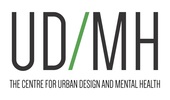Journal of Urban Design and Mental Health 2018;4:4
EDITORIAL
Diversity and belonging in the city
Erin Sharp Newton
NK Architects, USA
NK Architects, USA
"To study the city means analyzing the full 360 degrees of reality that surrounds us through both concrete appearances, as well as its impalpable truths: time, memory, need and sentiment.
There are many ways that the frenetic growth of cities has created voids. These are not so much material voids lacking construction but are more the absence of a rapport between people and their context. For example, there are places that one goes to solely for work or solely for fun, places where some go and others do not, and there are places where one feels alien." - Premise for CitizeNations, Cibic & Sharp
In looking at the city, it is imperative to look at the people.
In the good city, diversity offers stimulating variety without becoming chaotic. The good city allows for belonging, a place to be oneself, while also allowing community – a place to care for others, to not be self-confined. It is this balance that creates rich living. And yet, in many cities, people find themselves with others but alone. These cities are often conflicted: constrained by their own nostalgia and history, yet in seeking to move forward, surrendering their essence, the old being thrown away for the latest technological advances. In this complex interplay of the city's past, present and future, we seek meaning and fulfillment.
Perhaps it would be more helpful to invite the city onto the psychiatrist's couch. Mental health professionals help their patients understand and let go of the bondage of their past and embrace its richness in order to find and realise their hopes and dreams. Perhaps the same concept can be applied to the complex issue of cities: by observing human aspects in urbanism, architecture and design, and to attend to the gaps and voids in the cultural landscape by exploring issues of human relevance in a way that allows for meaning and nostalgia, as well freshness and imagination.
The following malleable story structures are intended to help simultaneously inspire the revealing and resolving of city/citizen backgrounds that may contribute to the constraint of different cities' hopes and dreams. They ask questions that, with imagining, might be answered.
There might be a city of only young and only old.
This city might be occupied by children to age 16, and by elderly, beginning at 60 years old. All other age groups are welcome on visitors' passes, and with great care. They will not be in charge.
What would this city look like?
This city might be occupied by children to age 16, and by elderly, beginning at 60 years old. All other age groups are welcome on visitors' passes, and with great care. They will not be in charge.
What would this city look like?
There might be a city of single people.
The people with no great abundance of blood family. This city is polka-dotted and spotty. When the wind blows, magic dust seems to fly around.
How would this city behave?
The people with no great abundance of blood family. This city is polka-dotted and spotty. When the wind blows, magic dust seems to fly around.
How would this city behave?
There could be a city of families.
We have this. This is Suburbia. We can define it. We see it already. It is the place of cookie cutter houses, planned developments and malls.
What is its future?
We have this. This is Suburbia. We can define it. We see it already. It is the place of cookie cutter houses, planned developments and malls.
What is its future?
Then there could be a city of citizens.
This is a favorite city of many. It is where all the idealists want to go. It is a place of conscious. A place where success is based on how much integrity you use in your approach to your community.
Would it echo Switzerland? Canada?
This is a favorite city of many. It is where all the idealists want to go. It is a place of conscious. A place where success is based on how much integrity you use in your approach to your community.
Would it echo Switzerland? Canada?
Or the city of independent thinking.
The city where each individual is fully able to think strongly using their own free will. These are not dependents. These are not vampires. These are people free from false systems of rule.
Could this become again America, born of independence, and then the metamorphosis into volumes of rules enforcing this independence?
The city where each individual is fully able to think strongly using their own free will. These are not dependents. These are not vampires. These are people free from false systems of rule.
Could this become again America, born of independence, and then the metamorphosis into volumes of rules enforcing this independence?
There could be the city of bondage.
Where each inhabitant must and always must stay closely tied to a greater system that is tied to a greater system which is tied to an even greater system which is tied to a far greater system, which is tied to an immensely greater system…and so on…
Should they break free or surrender?
Where each inhabitant must and always must stay closely tied to a greater system that is tied to a greater system which is tied to an even greater system which is tied to a far greater system, which is tied to an immensely greater system…and so on…
Should they break free or surrender?
The city of change: the ever-changing city.
This is every city. This particular ever-changing city changes fast, and changes on purpose. It doesn’t ever want to be what it was the day before. This is the city of fads.
What is in its junkyard?
This is every city. This particular ever-changing city changes fast, and changes on purpose. It doesn’t ever want to be what it was the day before. This is the city of fads.
What is in its junkyard?
Stop and think about the city of culture.
Where people can celebrate difference and exchange knowledge, and the museums are exhibitionist shows of self… they are the museums of Real Life TV.
How does one light this place of diversity and show?
Where people can celebrate difference and exchange knowledge, and the museums are exhibitionist shows of self… they are the museums of Real Life TV.
How does one light this place of diversity and show?
For the city of time, material moves.
The city of time can only be expressed through movement: movement in buildings, cars, people, and elements. The only constant is change.
Does it result in vertigo or flow?
The city of time can only be expressed through movement: movement in buildings, cars, people, and elements. The only constant is change.
Does it result in vertigo or flow?
For the city of transience.
Decay turns the material inside out and reveals something “other” each time: the gas station into a nursery school; the abandoned factory, turns into a community space. This is the city of caterpillars and butterflies.
Would 'crazy' be seen as genius here?
Decay turns the material inside out and reveals something “other” each time: the gas station into a nursery school; the abandoned factory, turns into a community space. This is the city of caterpillars and butterflies.
Would 'crazy' be seen as genius here?
A city is a place.
A city is a thing.
A city is full of people.
A city is a phenomenon.
A city is a paradox.
A city is a thing.
A city is full of people.
A city is a phenomenon.
A city is a paradox.
A sense of security, safety and freedom to be a whole person within a greater whole is possible when we study the people that make up the cities, which define them, from the outside in as well as inside out. Thinking about the city in these malleable ways might create space for the simultaneity of diversity and belonging, independence and community.
Alone becomes independent. Together becomes harmonious.
Alone becomes independent. Together becomes harmonious.
These ideas stem from the author's research at Domus Academy Milan and her subsequent book draft, Citizen City, written for Aldo Cibic/ Cibic & Partners. This modality has been used for Cibic Workshops since the 90s. Many projects were born (and hopefully continue to be born) of this way of approaching the design of places for people.
ABOUT THE AUTHOR
|
Erin Sharp Newton is a Fellow at the Centre for Urban Design and Mental Health and part of the NK Architects Healthcare Group in Morristown, New Jersey in the US. She holds a Masters degree in Architecture from UCLA and a Masters degree in Design from Domus Academy in Milan, Italy. Erin has lived and worked in Los Angeles, Milan, Philadelphia and New Jersey. Her exposure and experience span all areas of design, from architecture to the fine arts, from industrial design to technology, and her research and ideas have featured in venues such as Philips Solid Side and the Milan Design Fair. She is an Associate Member of the American Institute of Architects, a Certified Fitwel Ambassador, a Board Member of the Hunterdon Drug Awareness Program, and is on two Health & Human Services Local Advisory Committees. Erin believes that integrity and creativity are fundamental to the success of the multi-faceted world of design and living.
@ESharpNewton |












